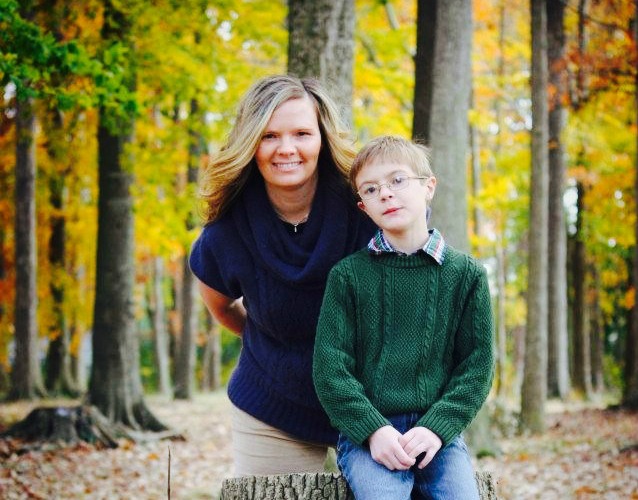Shortly after the birth of her son, Easton, Lisa Shaw had 10-15 visitors flood her room. But they weren’t well-wishers. They were doctors, nurses and social workers from Portsmouth Naval Hospital. She was told that her newborn was gravely ill. He had already suffered cardiac arrest and was diagnosed with hypoplastic left heart syndrome, a congenital heart defect that occurs when parts of the left side of the heart do not develop completely. He needed to be flown to Children’s Hospital of Philadelphia immediately.
“They told my husband to get into the car and start driving,” says Shaw. “They map quested the directions and handed them to him. He was the first to arrive in Philadelphia because we had a delay with the oxygen tanks on the plane back in Portsmouth.”
In Philadelphia, Easton was removed from life support, placed on a PDA drip to stabilize him and admitted into the cardiovascular intensive care unit (CICU).
“We weren’t physically or financially prepared for any of this,” recalls Shaw. “They weren’t sure Easton was going to make it.”
The first of three surgeries—the Norwood procedure, which seeks to create a “new” aorta to connect to the right ventricle—was scheduled when Easton was 3 days old.
“When he had his first surgery we hadn’t even named him yet. They brought a chaplain to us because at that point you don’t know what’s going to happen. We baptized him and handed him to the surgeons who promised to do all they could,” recounts Shaw.
After his surgery, she remembers seeing his exposed heart beating in his tiny chest and recalling it looking “like something out of a war zone.” The family spent the next four months in the hospital with their baby.
Easton returned to Philadelphia seven months later where he received a successful Bi-directional Glenn Shunt. This procedure creates a direct connection between the pulmonary artery and the vessel returning oxygen-poor blood from the upper part of the body to the heart.
His final procedure, the Fontan procedure, occurred at age 3 and was also successful. In this surgery, doctors connect the pulmonary artery and the vessel returning oxygen-poor blood from the lower part of the body to the heart, allowing the rest of the blood coming back from the body to go to the lungs. And though these surgeries do not cure hypoplastic left heart syndrome they help restore heart function.
Easton is 12 years old now. He is among the second generation of patients to receive the Norwood procedure with the first dating back to 1981 when William I. Norwood devised and completed the first successful surgery. Some that have undergone the procedure have endured complications, while others have not. The oldest patient of the procedure is now 30 years old. And that gives Shaw hope for her son.
“We’re in a holding pattern,” she admits. “He will at some point need a heart transplant since his heart will outgrow the repair. Right now, his only challenges are headaches, gastrointestinal issues from the surgeries and ADHD as a result of the lengthy bypasses.”
And while he’s never out of the woods, his successful surgeries have allowed for a fairly normal life.
“Outside of MRIs, he’s needed no medical intervention,” Shaw says. “He is scheduled to go back to CHoP for testing where they will check for liver diseases as a precaution. He takes daily medication, but you wouldn’t know he had heart disease by looking at him.
“We’ve been lucky.”
Learn more about the American Heart Association, including volunteer opportunities at www.heart.org.







